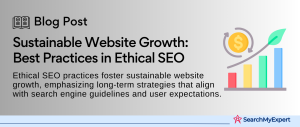Link Building and Its SEO Significance
Define Link Building and Explain Its Importance in SEO
Link building, a cornerstone of search engine optimization (SEO), involves acquiring hyperlinks from other websites to your own. It’s like digital networking, where each link is a vote of confidence, signaling search engines that others vouch for your content. Why is it crucial?
- Boosts Domain Authority:
Links from reputable sites enhance your domain’s trustworthiness. - Enhances Visibility: More links = higher rankings = more eyes on your content.
- Referral Traffic: Links are digital pathways leading users directly to you.
- Brand Building:
Good links are a nod to your brand’s credibility and authority.
Impact of Backlinks on Website Ranking
Backlinks aren’t just links; they’re the backbone of SEO. Here’s why:
- Quality Over Quantity: One quality link from a top-tier site can outweigh dozens of mediocre ones.
- Relevance Matters: Links from related domains carry more weight.
- Trust Transfer:
A link from a trusted site passes on some of that trust to you. - Diverse Link Profile:
A mix of links from various domains and types (like blogs, news, etc.) enhances credibility.
Steps in a Successful Link-Building Strategy
- Set Goals: What do you want? Improved rankings, more traffic, brand exposure?
- Target Audience Identification:
Who are you trying to reach? - Content Creation: Develop link-worthy, shareable content.
- Outreach:
Connect with website owners, bloggers, and journalists. - Monitor and Adapt:
Use analytics to track success and tweak your approach.
Analyze Your Website and Competitors
Analyzing your website and competitors is a crucial first step in developing a robust link-building strategy.
Conducting a Website Audit
A website audit helps you understand your current backlink profile. Here’s how to do it:
- Assess Your Existing Backlinks: Use SEO tools to analyze the quantity and quality of your current backlinks.
- Identify Toxic Links:
Look for any harmful links that might penalize your website. - Understand Your Link Profile: Analyze the diversity of your link sources and the types of links you have.
Identifying Your Target Audience and Keywords
Understanding your target audience and the keywords they use is essential for creating content that attracts backlinks:
- Audience Research: Identify who your target audience is and what their interests are.
- Keyword Analysis:
Determine the keywords your audience uses and how these can be incorporated into your content strategy.
Analyzing Competitors’ Backlinks
By examining your competitors’ backlinks, you can gain insights into their strategies and identify link-building opportunities:
- Identify Competitors:
Select a few key competitors whose SEO strategy you want to analyze. - Analyze Their Backlinks:
Use tools to inspect their backlink profiles, noting where their links are coming from. - Spot Opportunities:
Look for patterns or sources that you can also tap into for your website.
Utilizing SEO Tools for Link Building Opportunities
SEO tools are invaluable for identifying potential link-building opportunities:
- Backlink Analysis Tools:
Tools like Ahrefs, SEMrush, and Moz can help you analyze backlink profiles and find potential link sources. - Content Gap Analysis: Identify what content your competitors are being linked to that you don’t have, and consider creating similar content.
- Outreach and Relationship Tools: Use tools to streamline the process of contacting potential link partners and managing relationships.
Create Link-Worthy Content
Creating content that naturally attracts links is the cornerstone of any successful link-building strategy. Here’s how to craft content that earns those valuable backlinks:
High-Quality, Informative Content: A Must
Your content should be:
- Informative and Useful:
Ensure that your content provides valuable information that addresses the needs and questions of your audience. - Well-Researched: Back your content with data, research, and credible sources to enhance its authority.
- Engaging and Reader-Friendly: Use a tone and style that resonates with your audience. Keep it interesting and easy to read.
Keyword Optimization: Targeting the Right Audience
To make your content SEO-friendly:
- Keyword Research: Identify keywords that are relevant to your audience and have a good balance of search volume and competition.
- Natural Integration: Incorporate these keywords naturally into your content, including titles, headers, and the body text.
- Focus on Long-Tail Keywords: These are less competitive and more specific, often leading to higher conversion rates.
Diversifying Content Formats
Different formats can cater to various preferences:
- Infographics: Great for summarizing information and data visually.
- Videos: Ideal for tutorials, interviews, or product demonstrations.
- Ebooks and Guides: Provide in-depth information on a particular topic.
- Podcasts:
Cater to audiences who prefer audio content.
Promoting Content Across Channels
Effective promotion is key:
- Social Media:
Share your content on platforms where your audience is most active. - Email Newsletters:
A direct way to reach your audience. - Influencer Collaborations:
Partner with influencers to expand your reach. - Guest Posts: Write for other blogs in your niche to tap into their audience.
Implement Effective Outreach Strategies
Outreach is essential for earning high-quality backlinks. Here’s how to approach it:
Identifying Relevant Websites and Blogs
- Niche Relevance: Focus on sites that are relevant to your industry or niche.
- Authority Sites: Target websites with high domain authority as they offer more valuable backlinks.
- Audience Overlap: Look for sites whose audience would find your content valuable.
Building Relationships
Building a rapport is crucial:
- Engage with Their Content: Comment on their posts or share their content.
- Networking Events:
Attend industry events or webinars. - Social Media Interaction:
Engage with them on platforms like LinkedIn and Twitter.
Crafting Personalized Outreach Emails
Effective outreach emails should:
- Be Personal and Genuine: Address the recipient by name and mention something specific about their work.
- Highlight the Value:
Explain why your content would be beneficial for their audience. - Be Brief and to the Point:
Keep your email concise and respectful of their time.
Offering Value in Exchange for a Link
Propose mutually beneficial opportunities:
- Guest Blogging:
Offer to write a high-quality post for their blog. - Co-Marketing Opportunities:
Suggest collaborations on webinars, podcasts, or joint reports. - Resource Inclusion:
Recommend including your content as a resource in their existing or upcoming articles.
Utilize Broken Link Building
Broken link building is a tactic that involves finding broken links on other websites and suggesting your content as a replacement. It’s an effective way to earn backlinks and provide value to site owners.
Finding Broken Links
- Identify High-Quality Websites: Look for reputable websites in your niche with high domain authority.
- Use Tools to Find Broken Links: SEO tools like Ahrefs, SEMrush, or Screaming Frog can help you find broken links on these websites.
- Manual Checking:
Sometimes manually checking popular pages on a site can reveal broken links.
Creating Relevant Content
- Analyze the Broken Link:
Understand the content that was originally linked to. - Create Better Content: Develop content that matches or surpasses the quality and relevance of the original content.
- Ensure Relevance:
Your content should be a logical replacement for the broken link to increase the likelihood of your link being accepted.
Outreach to Website Owners
- Personalized Contact:
Reach out to the website owner or webmaster with a personalized email. - Offer Value: Explain how replacing the broken link with your link will benefit their site and audience.
- Be Professional and Concise: Keep your communication professional, friendly, and to the point.
Leverage Public Relations and Influencer Marketing
Public relations and influencer marketing can be powerful tools in your link-building arsenal.
Pitching to News Outlets and Publications
- Identify Relevant Media: Look for publications and news outlets that cover topics related to your niche.
- Craft a Compelling Pitch:
Your story should be interesting, newsworthy, and relevant to the outlet’s audience. - Follow Up: Be persistent but respectful in following up on your pitches.
Collaborating with Influencers
- Identify Industry Influencers: Look for influencers whose audience aligns with your target demographic.
- Collaboration Proposals:
Propose collaborations that are mutually beneficial, such as sponsored posts or co-created content. - Build Relationships:
Focus on building long-term relationships rather than one-off transactions.
Participating in Online Communities and Forums
- Find Relevant Communities: Join forums, groups, and communities where your target audience is active.
- Contribute Value: Regularly contribute valuable insights, advice, and content.
- Subtle Promotion:
While direct promotion is often frowned upon, you can include links to your content where it adds value to the conversation.
Monitor and Analyze Your Results
Monitoring and analyzing the results of your link-building efforts is crucial for understanding the effectiveness of your strategy and making necessary adjustments.
Tracking Website Traffic and Ranking
- Use Analytics Tools: Tools like Google Analytics and Google Search Console provide insights into your website’s traffic and search performance.
- Monitor Ranking Changes:
Keep track of how your rankings for key keywords change over time. - Analyze Traffic Sources: Understand where your traffic is coming from and which backlinks are driving the most visitors.
Analyzing Backlink Quality and Source
- Assess Backlink Quality:
Use SEO tools to evaluate the authority and relevance of websites linking to you. - Identify Most Effective Links: Determine which backlinks are contributing most to your SEO success.
- Check for Toxic Links:
Be vigilant about identifying potentially harmful links that might damage your site’s credibility.
Adjusting Your Strategy
- Learn from Data: Use the insights from your analysis to understand what’s working and what’s not.
- Iterate and Improve:
Continuously refine your link-building strategy based on these insights. - Stay Updated:
Keep abreast of the latest SEO trends and algorithm updates to adapt your strategy accordingly.
Conclusion:
In conclusion, effective link building is an indispensable part of a robust SEO strategy. By understanding and implementing the various tactics outlined in this guide – from creating link-worthy content to leveraging broken link building, and from harnessing the power of influencer marketing to monitoring your results – you can significantly enhance your website’s visibility and ranking.
Remember, SEO is an ongoing process that requires persistence, adaptation, and continuous learning. By staying informed and agile, you can ensure that your link-building efforts yield sustainable and rewarding outcomes. Whether you’re a seasoned marketer or a business owner looking to improve your online presence, this guide provides the insights and tools necessary to navigate the ever-evolving landscape of SEO with confidence and success.
Unleash your brand’s potential with specialized SEO Services.
Table of Contents
Toggle






